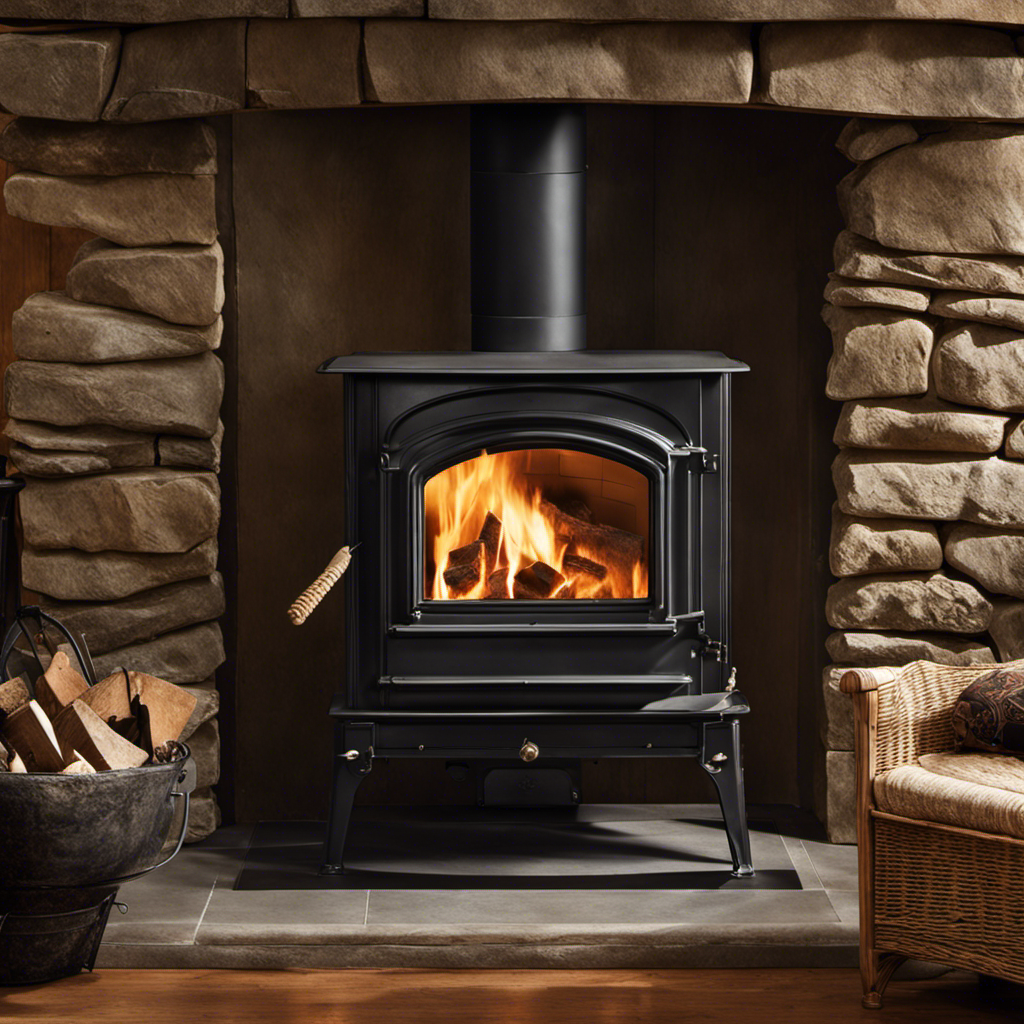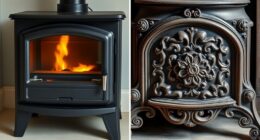Have you made the decision to add the cozy warmth of a wood stove to your home? Great decision!
In this article, I’ll guide you through the process of creating a wood stove hearth, the foundation that ensures your stove is safe and efficient.
From choosing the right materials to installing the stove itself, I’ll provide you with step-by-step instructions and important safety considerations.
Get ready to transform your space into a toasty haven with a DIY wood stove hearth.

Let’s get started!
Key Takeaways
- Consider cost effectiveness and explore eco-friendly alternatives when choosing materials for a wood stove hearth.
- Measure the space carefully and create a blueprint for planning before starting the installation process.
- Check local regulations and obtain necessary permits before building the foundation for the wood stove hearth.
- Choose a location with proper clearance and follow instructions for the installation of the wood stove and ventilation system.
Choosing the Right Materials
I’m currently researching different types of fire-resistant materials to use for my wood stove hearth. When it comes to choosing the right materials, there are a few factors I need to consider.
First and foremost, cost effectiveness is important to me. I want to make sure that the materials I choose aren’t only durable and fire-resistant, but also within my budget.
Secondly, I’m conscious of the environment and want to explore eco-friendly alternatives. One option I’m considering is using fire-resistant cement board. It’s affordable and provides excellent heat protection. Additionally, it’s made from recycled materials, making it a sustainable choice.
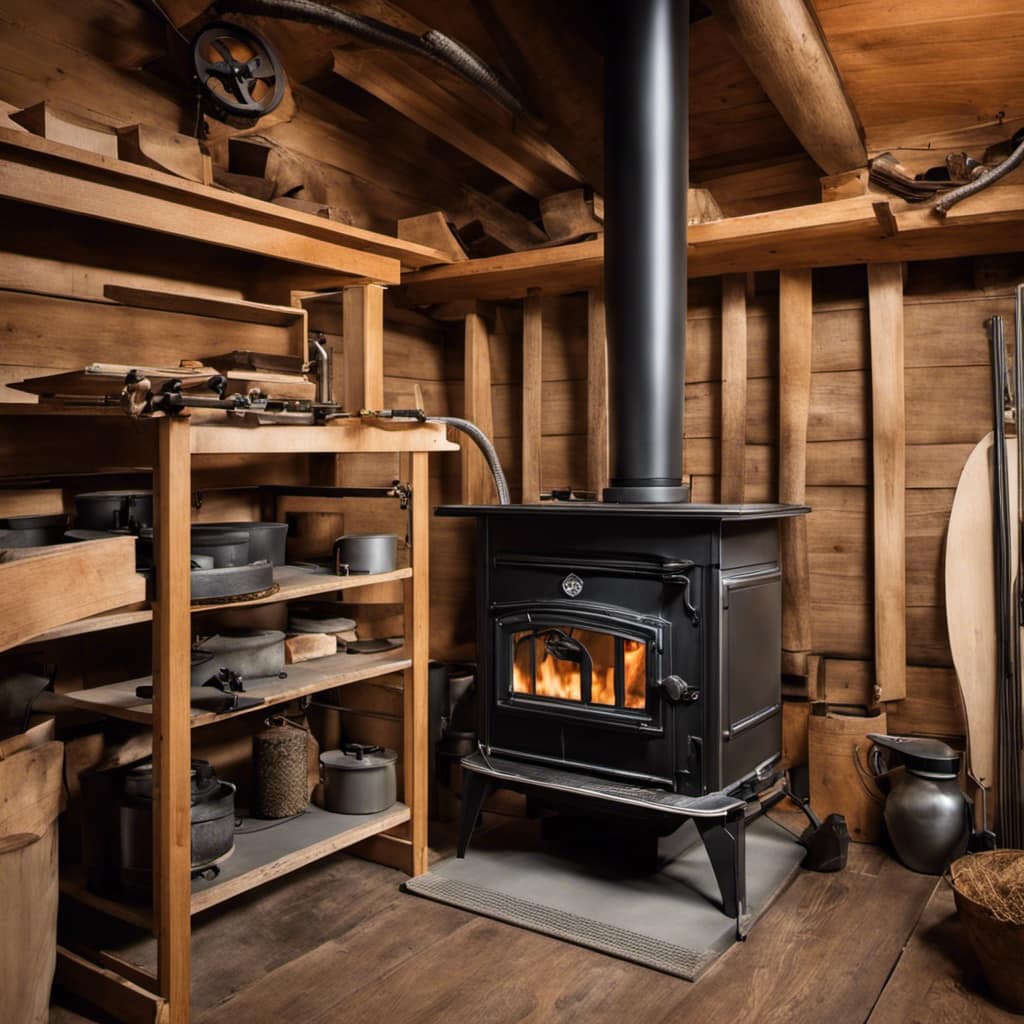
Another alternative is using natural stone tiles. They aren’t only beautiful but are also heat resistant and environmentally friendly.
Measuring and Preparing the Space
Before installing the wood stove hearth, I measured the space carefully to ensure a perfect fit. Creating a blueprint is essential for planning and visualizing the dimensions of the hearth. It helps in determining the materials needed and ensures accurate measurements.
Clearing the area is the next crucial step. Remove any furniture, rugs, or debris from the space to provide a clean and level surface for installation. Use a level to check the floor’s evenness and make any necessary adjustments. Additionally, it’s important to clear any obstacles such as electrical outlets or vents that may interfere with the installation process.
Taking these steps prior to installing the wood stove hearth will ensure a successful and safe installation.
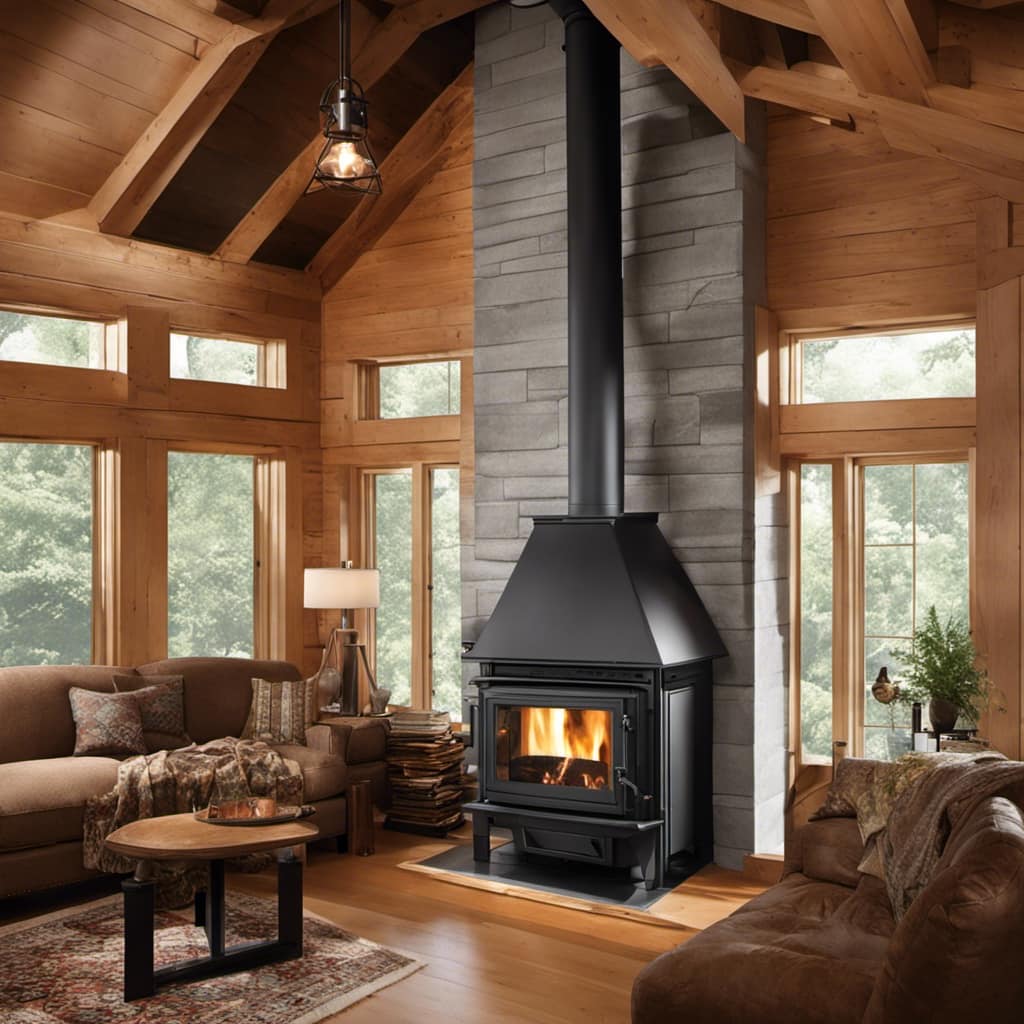
Building the Foundation
To build the foundation for the wood stove hearth, I will gather the necessary materials and start the construction process. Before beginning, it is important to check with local regulations to ensure that building permits are obtained if required. This will ensure that the construction is done in compliance with safety standards and building codes.
One crucial aspect of the foundation is the use of fireproof insulation. This serves as a protective layer, preventing the heat generated by the wood stove from damaging the surrounding structures. Fireproof insulation materials such as rock wool or ceramic fiber blankets are commonly used for this purpose.
Here is a table outlining the materials needed for building the foundation:
| Materials | Quantity |
|---|---|
| Concrete mix | 20 bags |
| Rebar | 10 pieces |
| Fireproof insulation | 5 rolls |
| Plywood | 4 sheets |
| Screws | 100 |
Installing the Wood Stove
I will carefully position and connect the stovepipe to the wood stove, ensuring a secure and efficient installation.

When it comes to installing a wood stove, there are several important safety precautions and ventilation requirements to consider. Here are three key points to keep in mind:
-
Choose the right location: Make sure to place the wood stove in an area with proper clearance from combustible materials. This will reduce the risk of fire and ensure adequate airflow around the stove.
-
Install a chimney or stovepipe: The stovepipe should be connected to the wood stove and extend through the ceiling and roof. It’s important to follow the manufacturer’s instructions for proper installation and use appropriate materials to prevent leaks and ensure proper ventilation.
-
Use a chimney cap: Installing a chimney cap on top of the stovepipe will prevent debris, animals, and rainwater from entering the chimney, keeping it clean and safe.
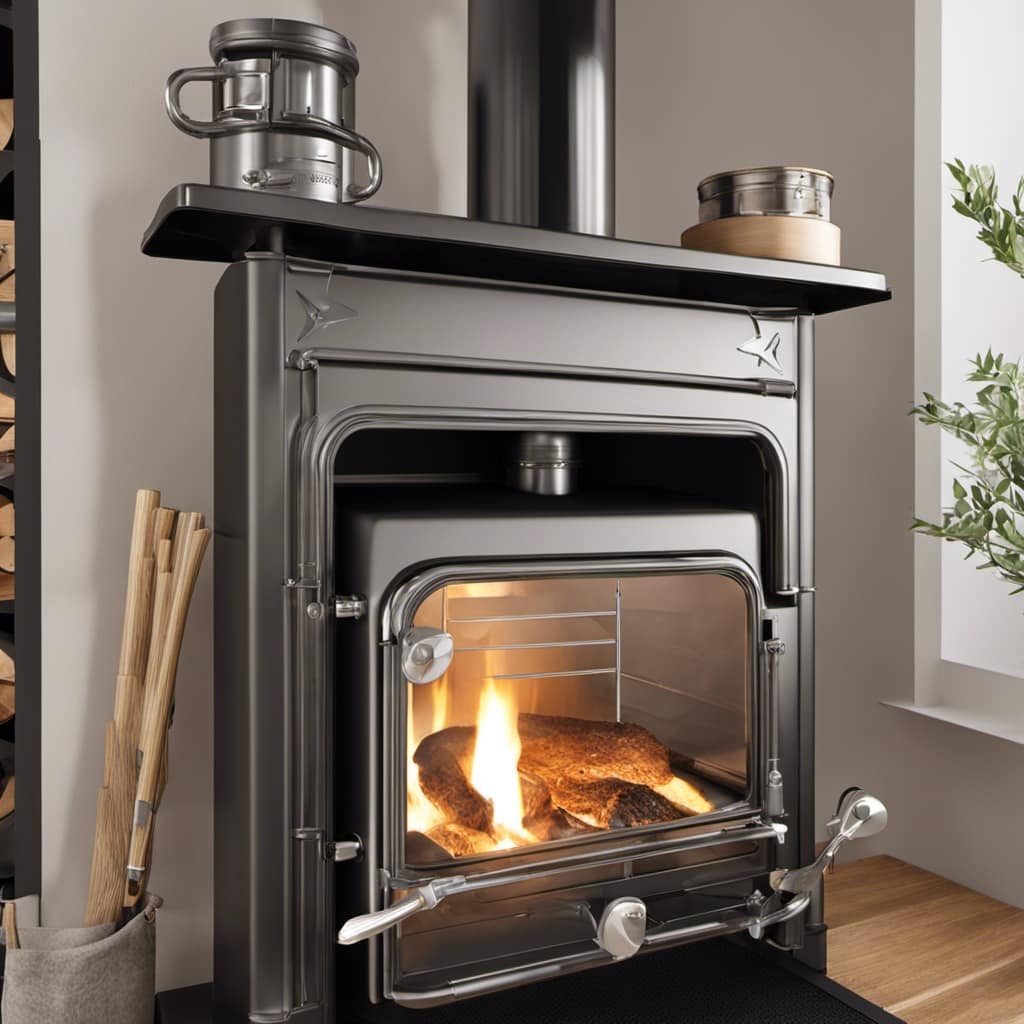
By following these safety precautions and ventilation requirements, you can ensure a successful wood stove installation.
Now, let’s move on to the next section about finishing and safety considerations.
Finishing and Safety Considerations
Now let’s discuss the importance of properly sealing the wood stove hearth and ensuring that all safety measures are in place to prevent accidents.
When it comes to fireproofing options for the wood stove hearth, there are a few key considerations. Firstly, the material used for the hearth should be non-combustible, such as brick or stone. These materials have excellent heat resistance and are readily available.
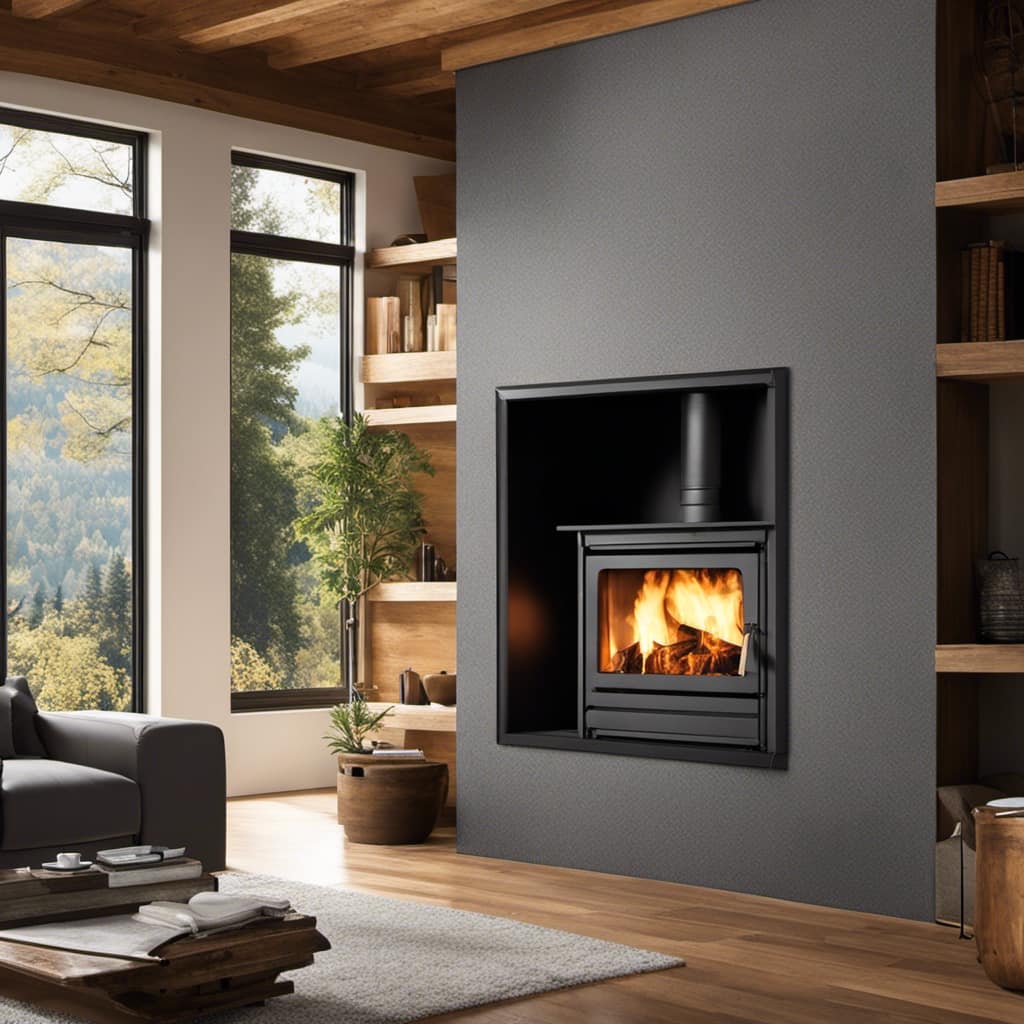
Additionally, it’s crucial to seal any gaps or cracks between the hearth and the surrounding walls or floor. This can be achieved using fireproof caulking or sealant, which will prevent any embers or heat from escaping.
Furthermore, when it comes to hearth design options, it’s advisable to have a raised hearth with a non-combustible material extending at least 18 inches in front of the stove. This serves as a safety barrier and prevents accidental contact with the hot stove.
Frequently Asked Questions
How Do I Maintain a Wood Stove Hearth to Ensure It Lasts for Years?
To ensure your wood stove hearth lasts for years, proper maintenance is crucial. Regularly clean and inspect the hearth for any cracks or damage. Use a heat-resistant sealant to protect it from heat damage.
What Are Some Tips for Cleaning and Removing Ashes From a Wood Stove Hearth?
Removing ashes from a wood stove hearth can be a messy task, but with a few tips and cleaning techniques, it becomes easier. I’ll share some insights on how to efficiently tackle this chore.

Can I Use a Wood Stove Hearth With a Pellet Stove Instead?
Using a pellet stove with a wood stove hearth has both pros and cons. Pros include convenience and efficiency. However, cons include the need for proper ventilation and potential damage to the hearth from the pellet stove’s heat.
Are There Any Specific Building Codes or Regulations I Should Be Aware of When Constructing a Wood Stove Hearth?
When it comes to constructing a wood stove hearth, it’s crucial to be aware of the building code regulations and construction guidelines. These standards ensure safety and compliance, so it’s wise to familiarize yourself with them before starting your project.
Can I Install a Wood Stove Hearth on a Second Floor or Do I Need to Have It on the Ground Level?
When installing a wood stove hearth on upper floors, it is important to consider safety. Different levels may require additional measures to protect against heat and fire hazards.
Conclusion
After meticulously selecting the perfect materials, measuring precisely, and constructing a solid foundation, it’s time to bask in the glory of your newly installed wood stove hearth.
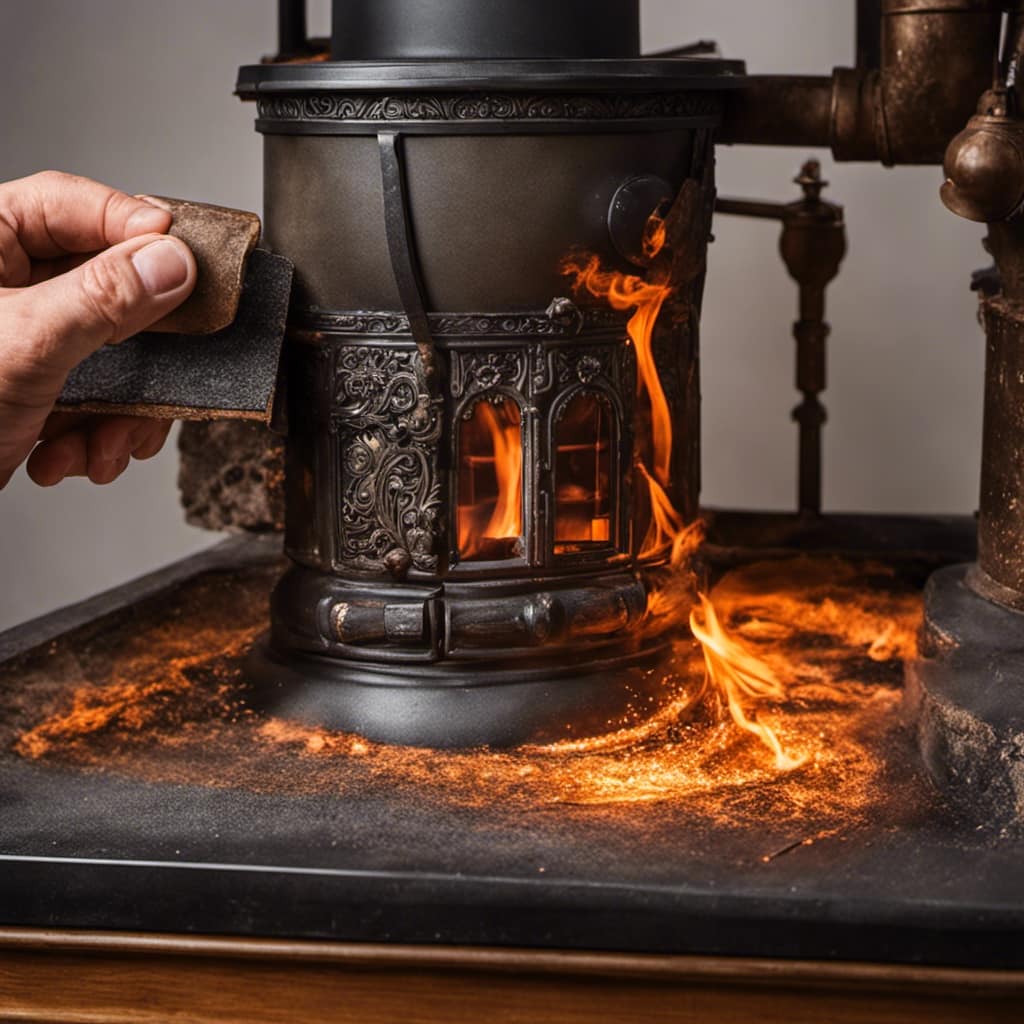
With its technical intricacies and attention to detail, this project has undoubtedly transformed you into a master craftsman.
Now, sit back, relax, and revel in the warm embrace of your creation, knowing that you have achieved the pinnacle of hearth-building greatness.
Growing up surrounded by the vast beauty of nature, Sierra was always drawn to the call of the wild. While others sought the comfort of the familiar, she ventured out, embracing the unpredictable and finding stories in the heartbeat of nature.
At the epicenter of every remarkable venture lies a dynamic team—a fusion of diverse talents, visions, and passions. The essence of Best Small Wood Stoves is crafted and refined by such a trio: Sierra, Logan, and Terra. Their collective expertise has transformed the platform into a leading authority on small wood stoves, radiating warmth and knowledge in equal measure.






